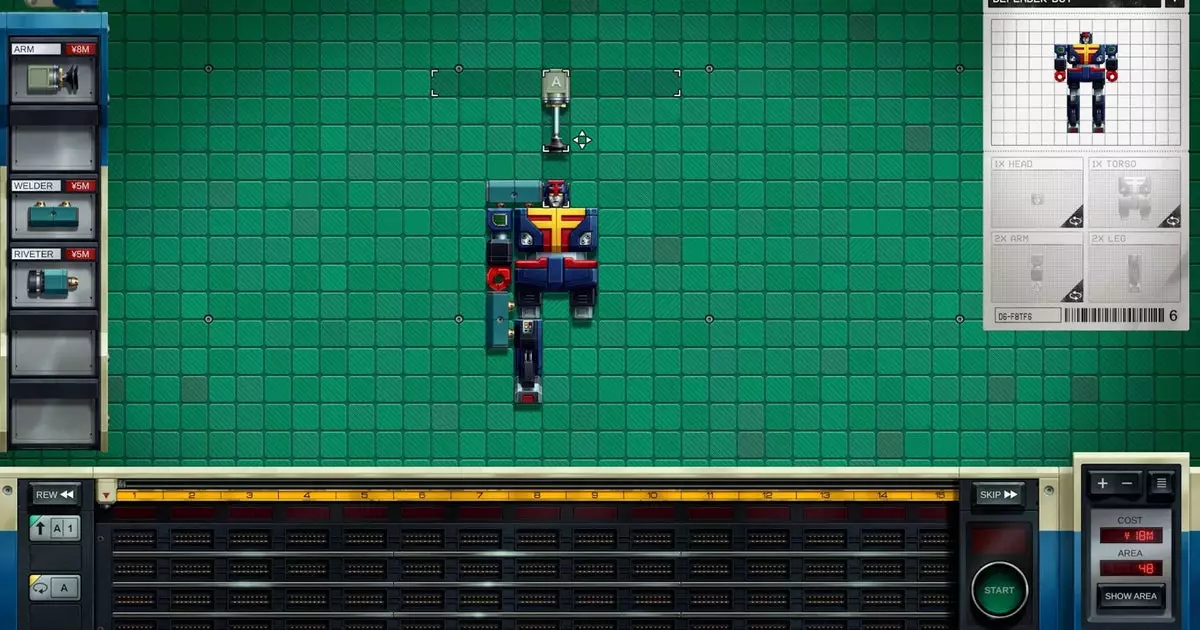Fresh creative juices flow as Zachtronics, the studio renowned for innovative puzzle mechanics and automation-based gameplay, introduces us to “Kaizen: A Factory Story.” This much-anticipated title emerges from a new studio named Coincidence, crafted by key figures from the original Zachtronics team. With a backdrop set in the vibrant and dynamic atmosphere of 1980s Japan, players are promised an engaging experience centered around building whimsical robotic creations and functioning machinery—all while perhaps serving delectable katsu curry along the way.
While Coincidence is technically a distinct entity, the familiar hands guiding this creative ship are those of esteemed designers Zach Barth and Matthew Seiji Burns. Their illustrious history includes works like “Exapunks,” “TIS-100,” and “Shenzhen I/O,” which have significantly shaped the landscape of puzzle games. The resemblance to previous titles gives fans a comforting sense of continuity while also sparking curiosity about new, innovative gameplay features.
In an interview with PC Gamer, Barth made an intriguing note, stating, “It’s not a Zachtronics game; this is a Coincidence game.” This distinction could suggest that while the game will embody the spirit of its predecessors, it aims to forge its own identity within the puzzle genre, potentially expanding on the existing mechanics and aesthetic characteristics that fans adore.
Kaizen: A Factory Story retains the essential puzzle-solving and automation elements of traditional Zachtronics releases, with a fresh twist. Players will dive into the role of a Japanese-American protagonist navigating the ins-and-outs of factory machinations on the outskirts of Tokyo. The notion of building efficient or wildly inefficient machines brings forth an engaging dichotomy that has always been a hallmark of Zachtronics-style games.
What stands out in this new iteration is a gameplay mechanic that allows players to “scrub back” through their assembly process. This rewind feature could serve as a valuable tool for correcting mistakes in larger projects, alleviating the frustration players often face when error-checking intricate solutions. This seems like a pragmatic innovation that fits within the overarching theme of iterative problem-solving central to the puzzle genre.
Adding to the game’s allure are its quirkiest components, like “Pachi-Sol,” a hybrid of solitaire and pachinko—an unexpected yet entertaining fusion that hints at the creative whimsy expected from this title. The combination of different gaming styles could lead to novel puzzle experiences, promising to keep players both entertained and challenged.
Moreover, the flexibility in designing machines and the encouragement to share your creations through GIF exports evoke a sense of pride echoed in social media interactions. This brings a modern interplay into the classic puzzle genre, showcasing artworks of clever designs much like parents celebrate their children’s drawings.
The excitement within the gaming community is palpable, especially among those who have enjoyed the captivating and intellectual challenges posed by previous titles. Writers at Rock, Paper, Shotgun—like those involved with the exploration of “Eliza” or the mechanical intricacies of “Opus Magnum”—have expressed a long-standing admiration for Zachtronics-style games. Fans of these works are eagerly following the trajectory of Coincidence, hoping that Kaizen: A Factory Story will live up to the high expectations set by its forerunners.
Zach Barth’s reflections on the term “Zachlikes” highlight an inherent tension in the creative world. While he seeks to distance from the labels that define his work, his signature style remains embedded in this community’s culture. The discussions surrounding branding and legacy will surely continue as more details about the game are unveiled.
As we await the official release date for “Kaizen: A Factory Story,” speculation abounds. Will Coincidence deliver a game that transcends its predecessors while still celebrating the essence of Zachtronics’ ingenuity? One thing is certain: the anticipation for this new chapter in puzzle automation is growing, fueling the excitement that new experiences await in a beautifully crafted Japanese factory setting. So, as we sit on the edge of our seats, we’ll be ready to immerse ourselves in the world of clever machines and builds when the moment finally arrives.

